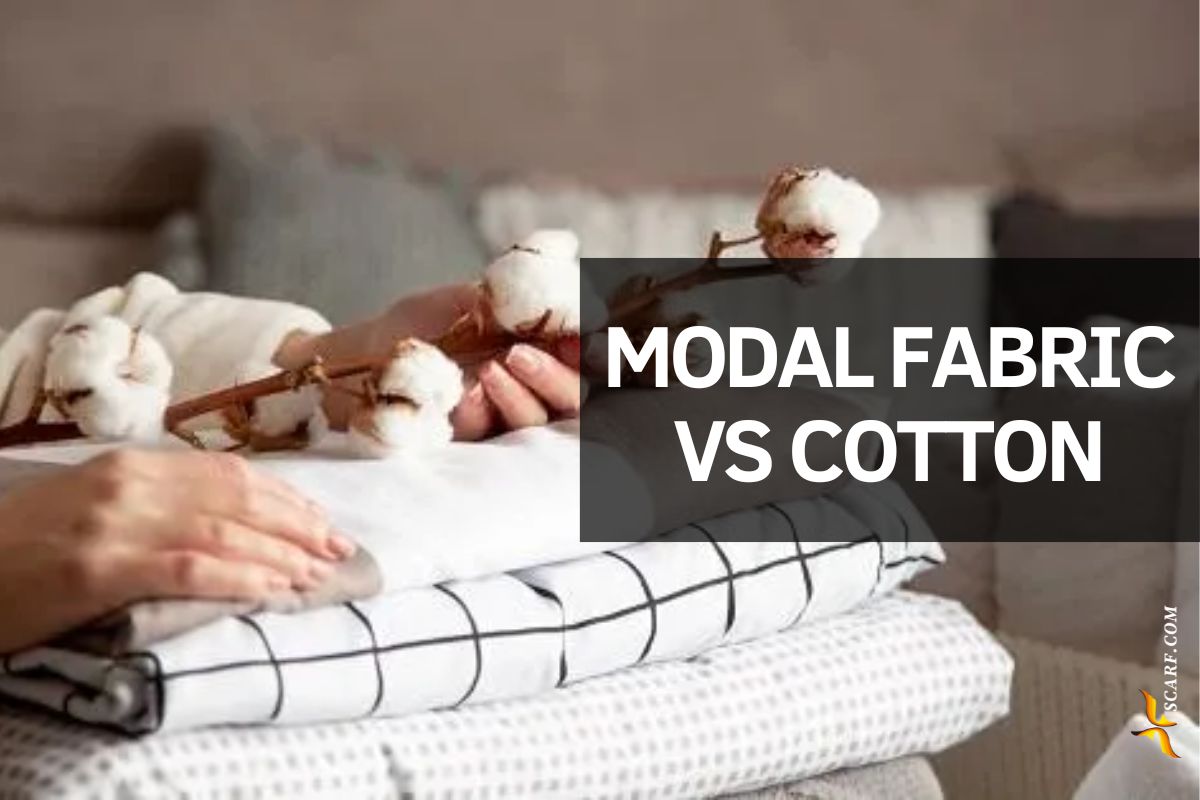Choosing clothing or bedding brings you face to face with fabric choices. Modal and cotton both offer comfort from nature. They feel soft against your skin. Yet their qualities differ in meaningful ways.
This guide explores texture, durability, and care. It helps you select what truly suits your life and values.
Short answer
For most everyday needs, cotton’s breathability and easy care make it the practical choice, while modal offers superior softness for luxury loungewear and undergarments. Your ideal pick depends on whether you prioritize easy maintenance or ultimate comfort against your skin.
- Short answer
- The Basics: What Are Modal and Cotton?
- Key Differences Between Modal and Cotton
- Which Fabric Is Better for You?
- FAQs: Modal Fabric vs Cotton
- 1. Is modal hotter to wear than cotton?
- 2. Does modal shrink more than cotton?
- 3. Is modal more expensive than cotton?
- 4. Which fabric is more eco-friendly?
- 5. Can people with sensitive skin wear modal?
- 6. Which fabric is more durable?
- 7. Why does my modal garment feel softer after washing?
- 8. Are there any drawbacks to modal?
- 9. Is modal a natural fabric?
- 10. Which fabric is better for towels?
The Basics: What Are Modal and Cotton?
What is cotton?
Cotton grows on plants in fluffy bolls. People have used it for centuries. It is valued for breathability and gentle touch. The fabric works well for sensitive skin. You find it in everyday items like t-shirts and towels. Cotton is strong and becomes softer with early washes. Its natural fibers allow air to circulate freely.
What is modal fabric?
Modal begins as wood from beech trees. Through a careful process, it becomes a smooth fiber. The result is a fabric with a silky feel. It is highly absorbent and drapes elegantly. Modal often appears in underwear and comfortable loungewear. It resists shrinking and maintains its smoothness over time. Many love it for its lightweight, luxurious quality.
Key Differences Between Modal and Cotton
Source and Production
Cotton comes directly from the cotton plant. Farmers harvest and clean the fluffy fibers. The material is then spun into yarn for weaving. Modal originates from beech tree pulp. This pulp undergoes transformation into soft threads. Both have natural roots. Their production paths are distinct. One involves agriculture; the other uses a regenerative process.
Feel and Comfort
Modal offers a noticeably silky sensation. It glides against the skin with a fluid drape. The fabric absorbs moisture effectively, keeping you dry. Cotton provides a classic, soft comfort. It feels familiar and reliably cozy. Its breathability makes it a favorite in warm weather. Each fabric has a unique presence against the body.
Durability and Care
Modal fibers are strong, especially when wet. They withstand washing well and grow softer with each cycle. The fabric holds its shape and resists pilling. Cotton is also durable but can shrink if washed in hot water. It generally tolerates higher drying heat. Modal may request gentler machine cycles. Cotton is often more forgiving in daily care.
Environmental Impact
Cotton farming traditionally uses significant water. Organic cotton practices reduce this impact. Modal production frequently employs a closed-loop system. This method recycles water and solvents. Beech trees require less water than cotton plants. Both fabrics can be part of a conscious lifestyle when sourced responsibly.
A quick comparison helps visualize their traits:
| Feature | Modal | Cotton |
|---|---|---|
| Source | Beech tree pulp | Cotton plant |
| Feel | Silky, smooth, drapes well | Soft, breathable, cozy |
| Absorbency | Highly absorbent | Naturally absorbent |
| Durability | Strong when wet, softens with wash | Strong, may shrink with heat |
| Common Uses | Underwear, pajamas, soft tops | T-shirts, denim, bedding |
Which Fabric Is Better for You?
When to Choose Modal
Select modal for a luxuriously soft experience. It excels in garments worn close to the skin. Its moisture-wicking property benefits activewear. The fabric resists wrinkling beautifully. Choose it for pieces where fluid movement and a silky touch matter.
When to Choose Cotton
Opt for cotton when breathability is key. It is ideal for everyday comfort and high heat. The fabric is wonderfully easy to care for. It suits children’s wear and sensitive skin perfectly. Cotton’s sturdy nature makes it excellent for towels and sheets.
Considering Blends
Blended fabrics merge modal’s softness with cotton’s structure. They offer enhanced durability and easy maintenance. These mixes reduce wrinkling and improve fit. They represent a harmonious balance for many clothing items.
FAQs: Modal Fabric vs Cotton
1. Is modal hotter to wear than cotton?
Modal is breathable and moisture-wicking. It generally feels cool. Cotton also allows air circulation. Both work well in warmth.
2. Does modal shrink more than cotton?
Modal resists shrinking better. Cotton may shrink if exposed to high heat during washing or drying.
3. Is modal more expensive than cotton?
Modal typically costs more. Its production process is involved, positioning it as a premium material.
4. Which fabric is more eco-friendly?
Traditional cotton uses more water. Modal from closed-loop systems has a lower footprint. Organic cotton is also an eco-friendly option.
5. Can people with sensitive skin wear modal?
Modal is smooth and gentle. It usually suits sensitive skin. Cotton is also a trusted hypoallergenic choice.
6. Which fabric is more durable?
Modal demonstrates strength, particularly when wet. Good quality cotton also lasts for years.
7. Why does my modal garment feel softer after washing?
Modal fibers soften with repeated washing. Cotton can soften too, but may sometimes stiffen.
8. Are there any drawbacks to modal?
Pure modal can be very fluid. Some prefer blending it with cotton for more shape.
9. Is modal a natural fabric?
Modal is a regenerated cellulose fiber. It comes from wood, making it semi-natural, not synthetic.
10. Which fabric is better for towels?
Cotton’s texture and absorbency make it superior for towels. Modal’s smoothness is less ideal for drying.
Understanding these fabrics empowers your choices. Each has unique gifts. Your preference depends on the feel, function, and care you desire. May your selections bring you comfort and confidence.
We specialize in customizing scarves, hats, clothing and accessories. Please feel free to contact us.



